Making trenches for irrigation system pipes

Making trenches for irrigation system pipes
Making trenches for irrigation system pipes
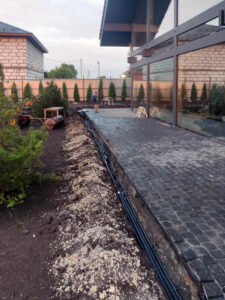
Irrigation: Work Plan
Watering system is needed in regions with continental climate – so call us to project and install automated watering system.
Leave a message if You need irrigation

Making trenches for irrigation system pipes
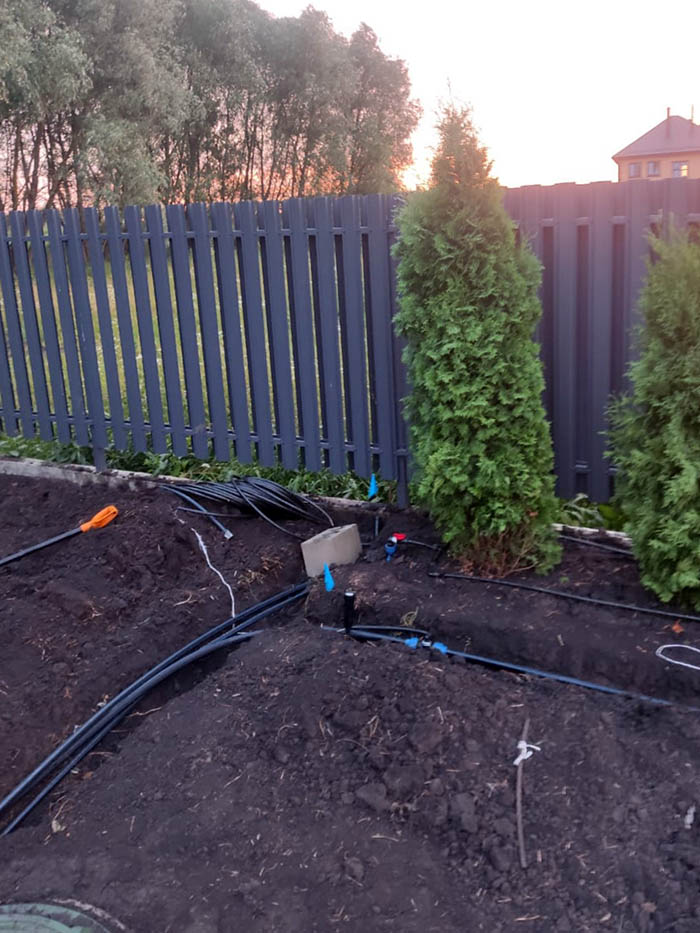
Drip irrigation zone for cypress trees

Irrigation system and rainwater drainage well
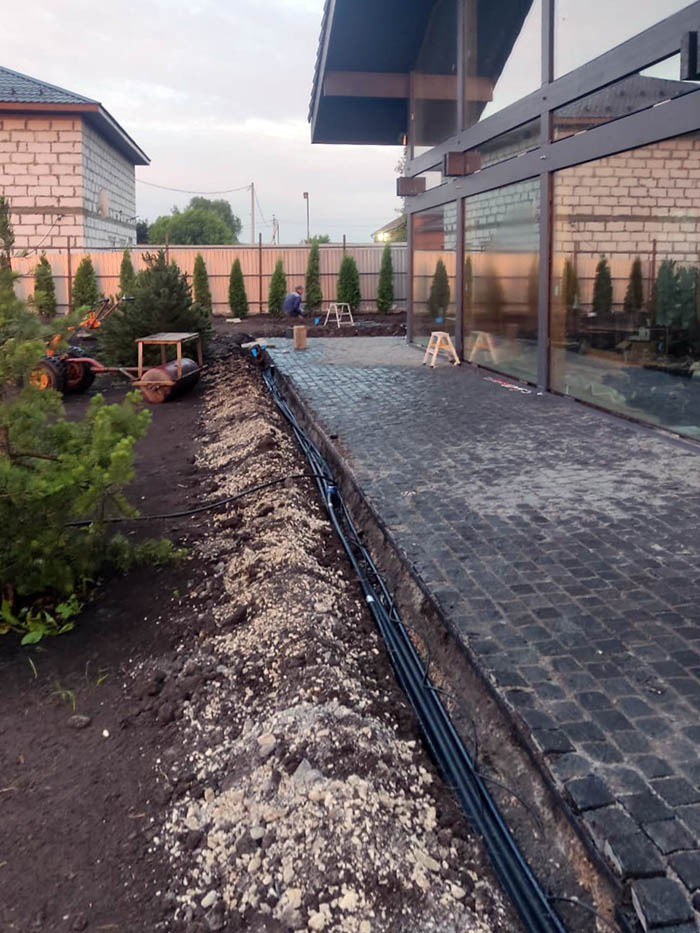
Laying water pipes next to the patio
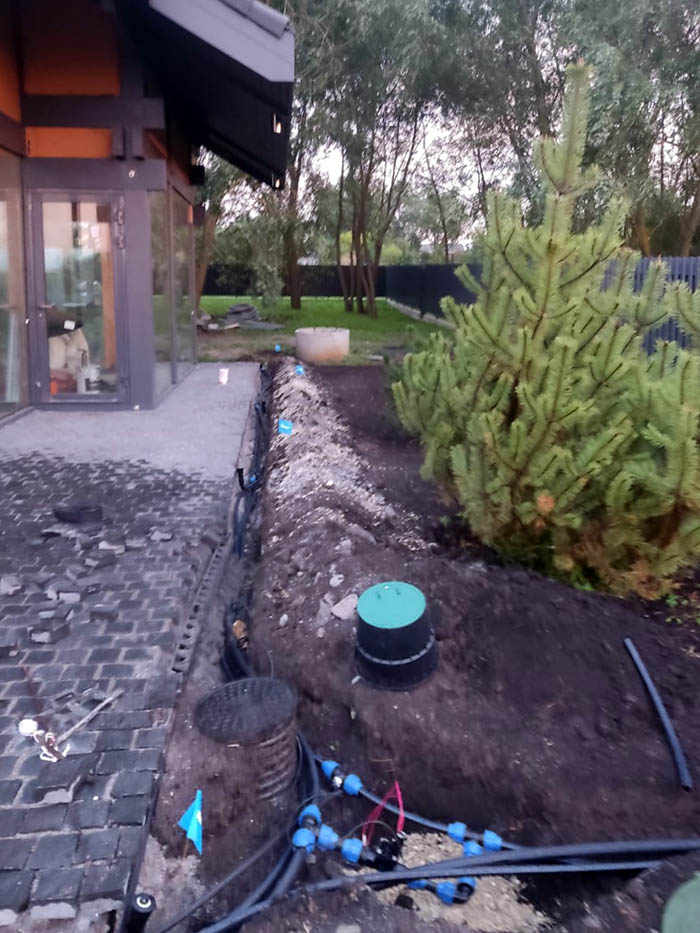
Irrigation system pipe connections – fittings
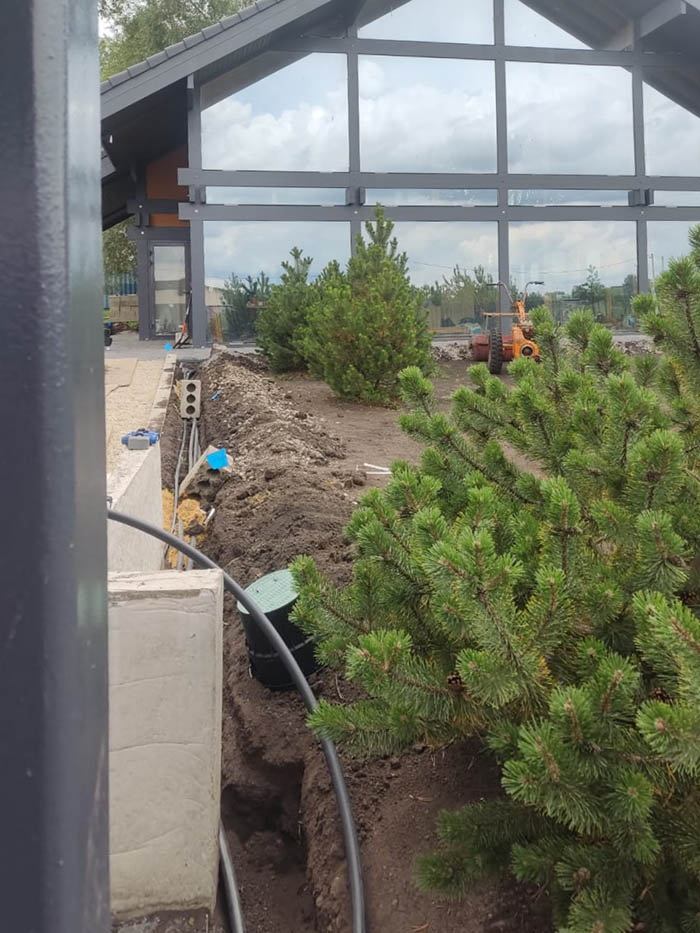
Work on installing irrigation in an area with plants
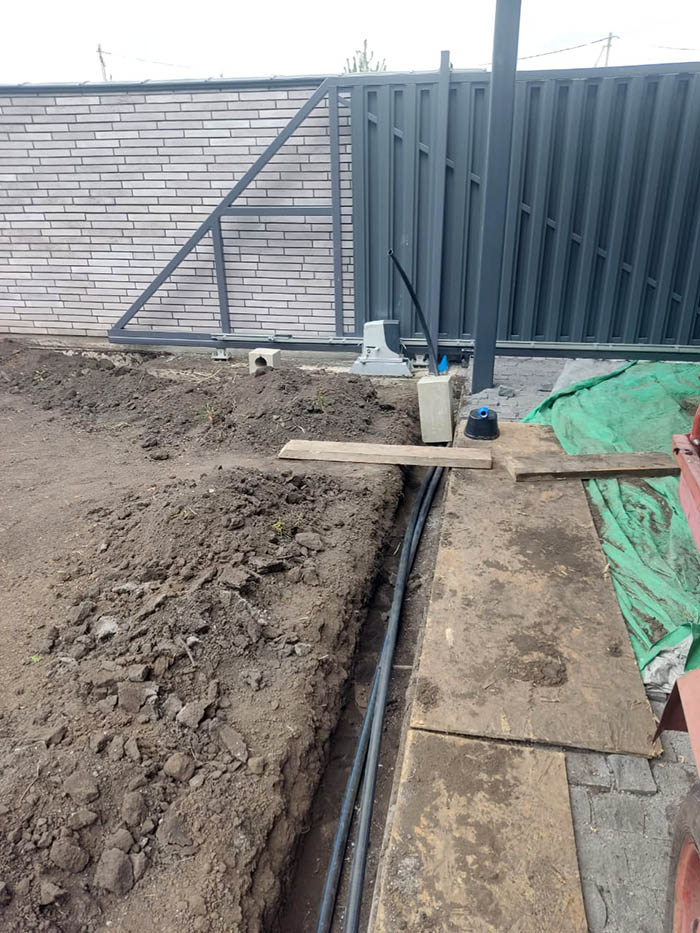
Laying polypropylene pipes
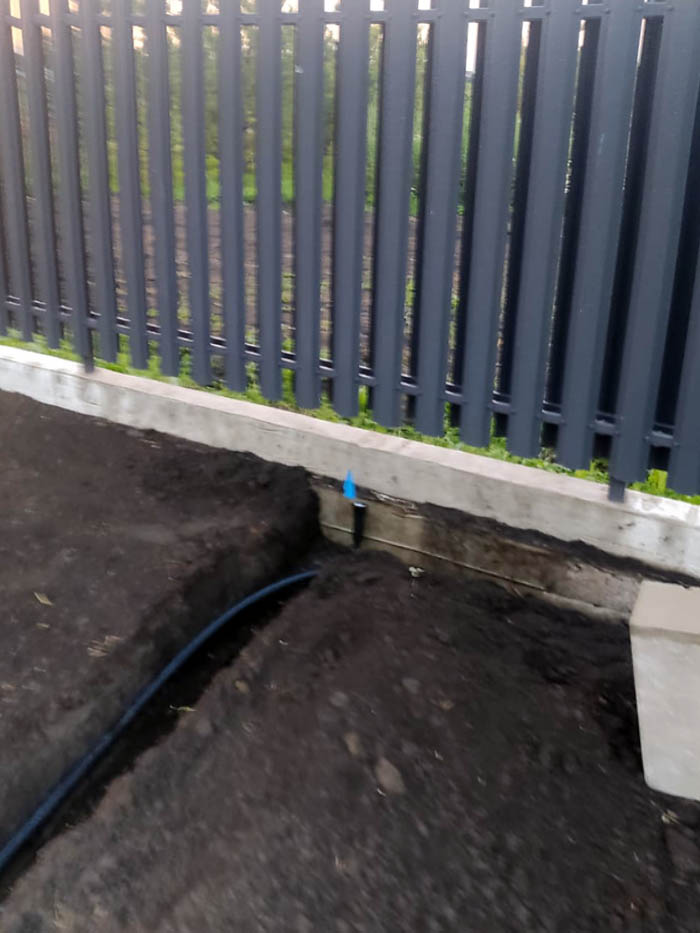
Water
polypropylene pipes
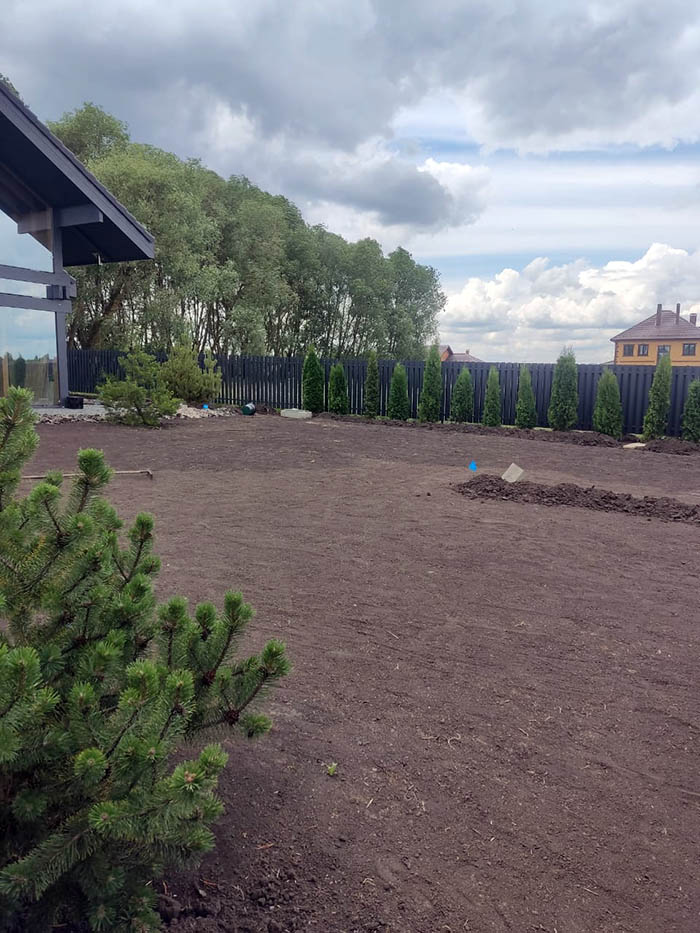
A whole site to set watering system
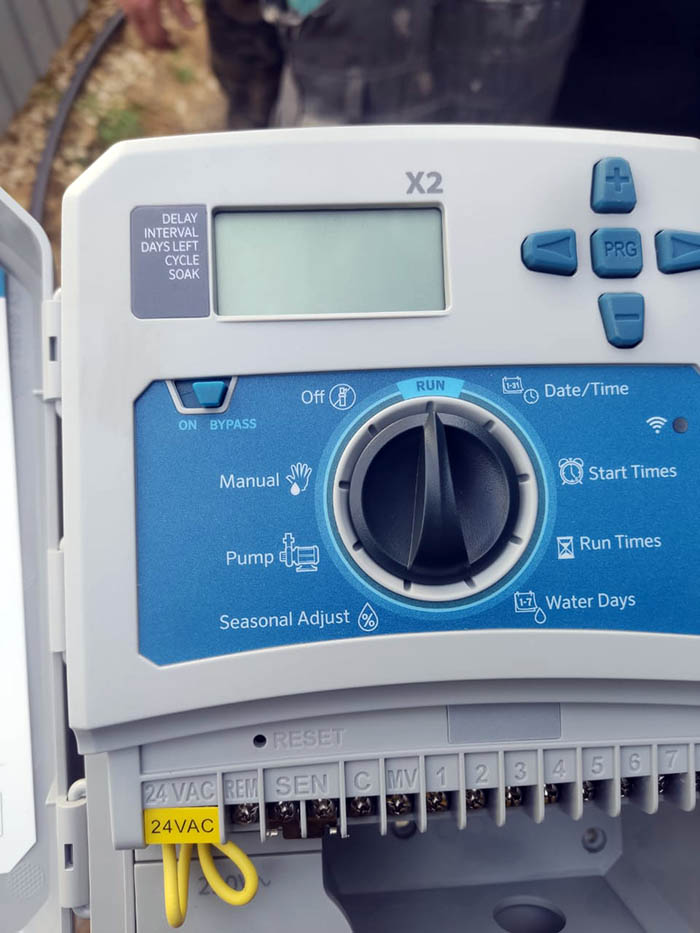
Automatic processor of irrigation system
The irrigation and watering system for the site in this example is complex. There is drip irrigation under the trees and sprinklers are installed on the lawn. Such a system requires preliminary mechanical filtration of water so that particles do not clog the sprinklers nozzles and drip irrigation. Also, before the winter period, the automatic irrigation system has to be preserved – purged with air to avoid damage to fittings and pipes by frozen water.
Irrigation systems are essential for maintaining a healthy and lush garden or lawn. The first step in setting up an irrigation system is designing it to suit the specific needs of your land piece. This involves planning the layout, determining the water requirements of different plants, and choosing the appropriate type of irrigation system. Proper design ensures efficient water use and coverage.
Watering drop system does not need deep positioning, so if you have a plants or trees, – no problem.
Automatic drip irrigation is an efficient method to water plants directly near their roots. This system uses a network of tubes and emitters to deliver water slowly and consistently, reducing water wastage and ensuring that plants receive the right amount of moisture. Drip irrigation is ideal for gardens, flower beds, and vegetable patches, promoting healthy plant growth and save more water.
Automation need moisture sensors in soil with connection to processor. If we have a constant pressure in water source – the valve will be opened when it needed to rise moisture.
For larger areas like lawns, we plan installing sprinklers. It’s is a common practice. Sprinklers distribute water evenly across a wide area, making them suitable for grass and ground covers. There are various types of sprinklers, including stationary, rotating, and oscillating models. The choice depends on the size and shape of the area to be watered. Proper installation ensures uniform coverage and prevents water runoff.
It is suitable for golf or football fields, park lawns and gardens near your home. Sprinkling makes comfort environment for plants and people too – it lowers high sun days temperature. Water quantity needed for sprinklers is higher than drop watering systems.
Modern irrigation systems often include programmable controllers that automate the watering schedule. These controllers can be set to water at specific times and durations, considering factors like weather conditions and soil moisture levels.
Automation not only saves time but also ensures that plants receive consistent and optimal watering, promoting their health and growth. If it’s raining – watering system rests. If the temperature lower than approx. +4-+7 Celsius it stops too.
We use autonomous systems to deliver water in a garden, but some systems are linked with WiFi thus controlling may be distant.
Some low land plots are cheaper – people buy them, and some people do not care about ground water level – so drainage works may correct all water excess problems.
Sometimes, the issue is not watering but draining excess water from the property. Drainage systems are essential for preventing waterlogging and soil erosion. An effective drainage system considers the terrain of the property and may include components like French drains, catch basins, and sump pumps. Proper drainage design ensures that excess water is efficiently removed from the area.
Problems with water rise in spring in Russia or Canada – melting snow converts in high ground water levels. Water can flood the basement ща a house or garage on -1 level. If the problem occurs – appropriate drainage works must be projected and done. And we are masters in all these works! Call us!
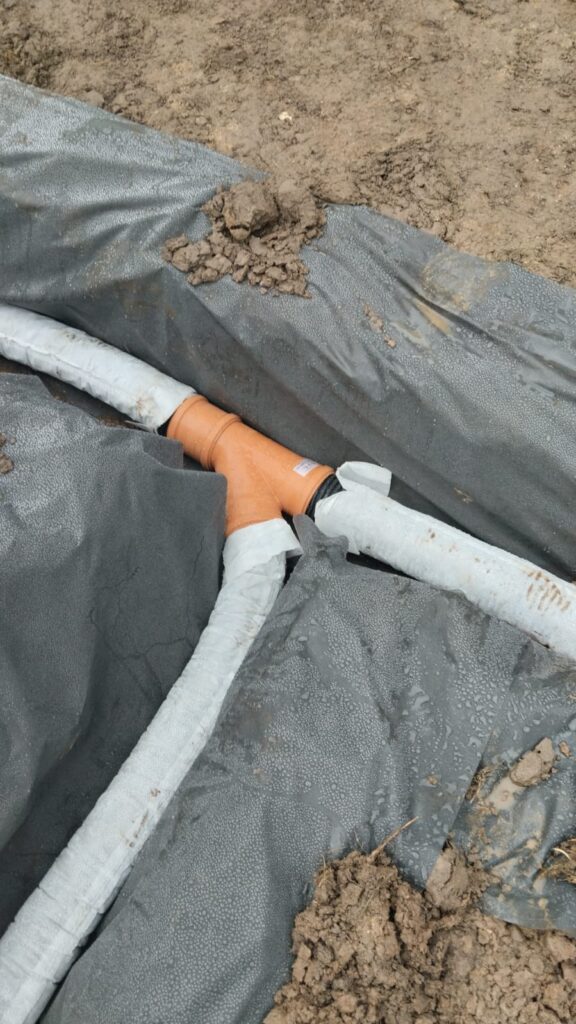
Laying drainage pipesLaying drainage pipes for surface drainage

Geotextile wrap for drainage
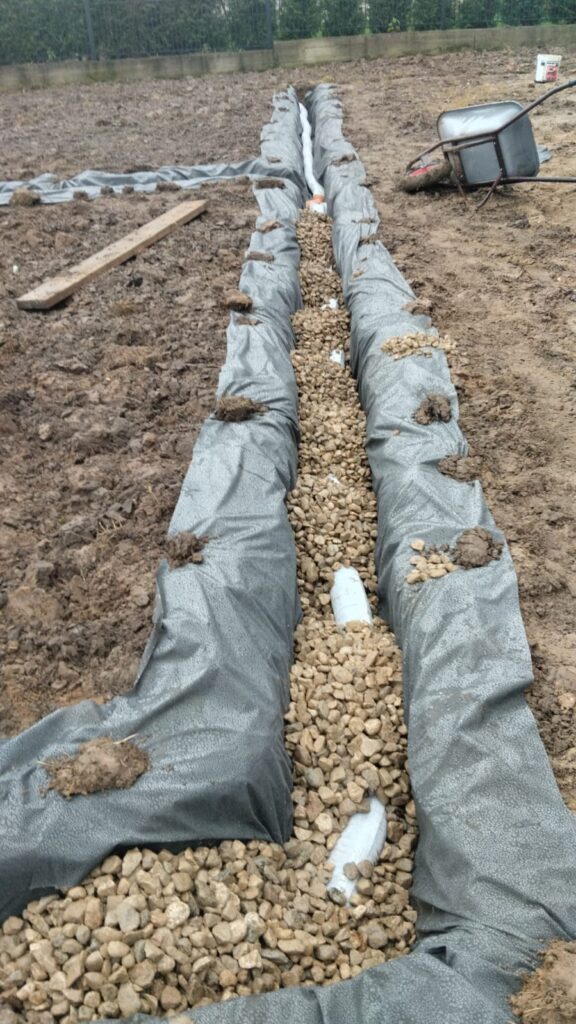
Filling the drainage ditches with the pipe with gravel
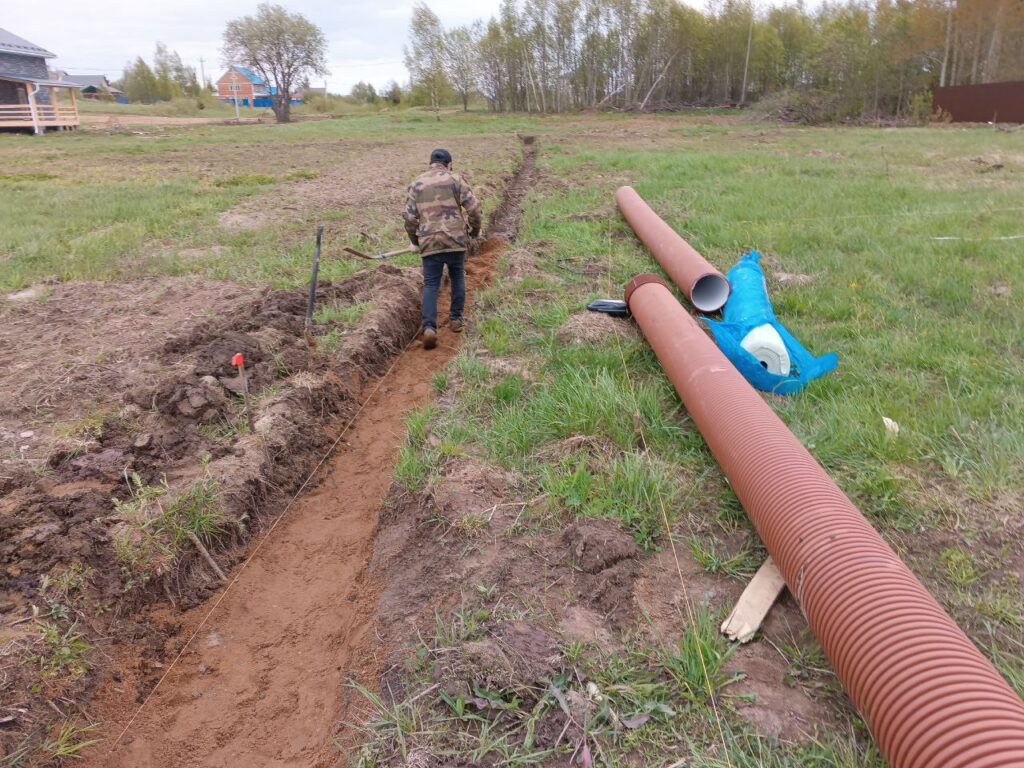
Preparing a trench for surface drainage
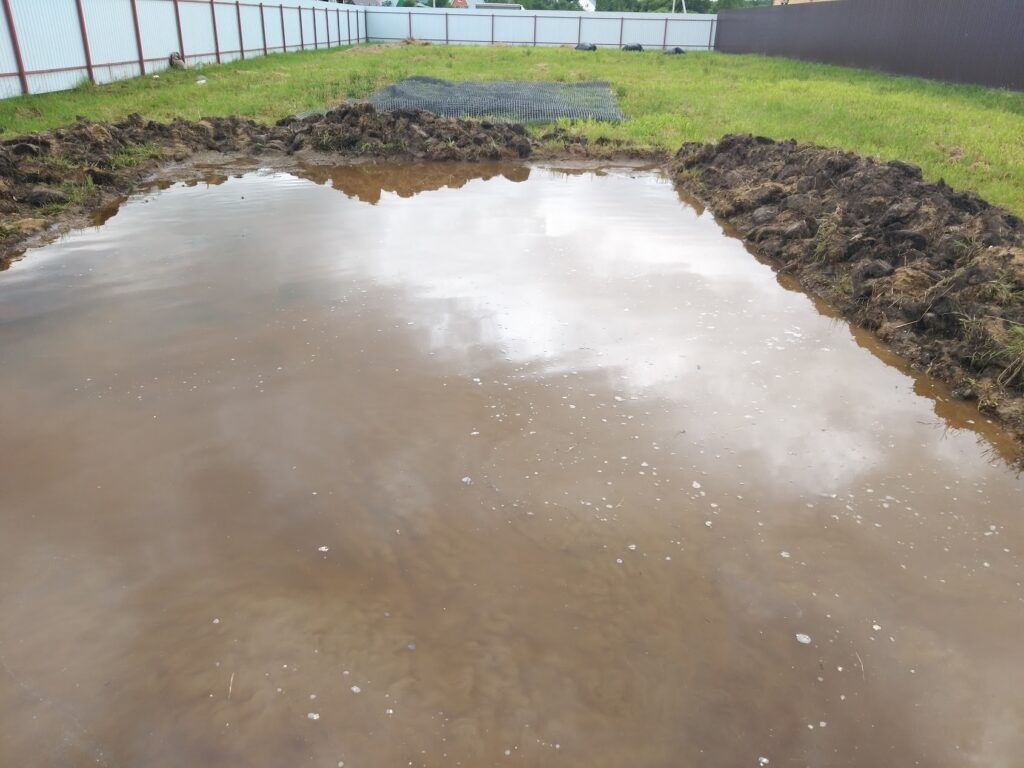
High water drainage
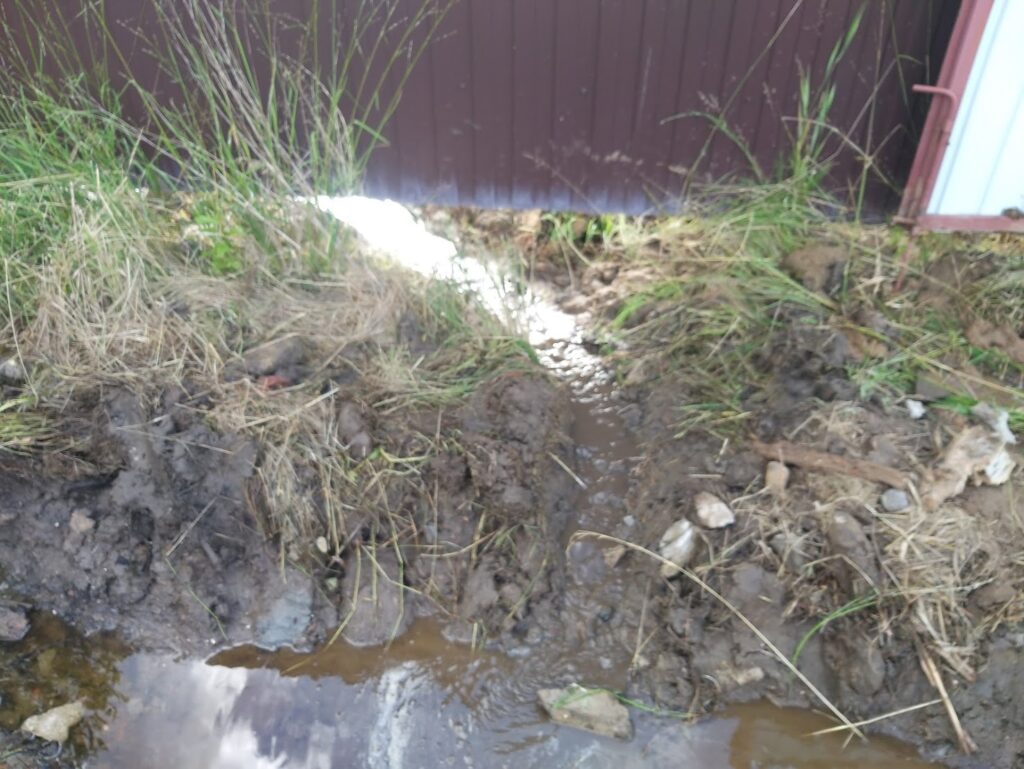
Drainage of the site
Before installing a drainage system, it’s crucial to survey the property to assess groundwater levels and soil conditions. This information helps in designing an effective drainage system that suits the specific needs of the property. The design phase includes planning the placement of drains and considering the natural slope of the land to facilitate efficient water flow.
One of the popular services is making an entrance to the site through a drainage ditch whith culvert pipe or laying a drainage culvert pipe under the access road.
The installation phase involves setting up drainage wells, laying underground drainage pipes, and installing vertical well pipes. These components work together to collect and redirect excess water away from the property. Proper installation ensures the longevity and effectiveness of the drainage system, preventing water-related issues in the future.
In areas with significant water accumulation, drainage pumps are necessary to remove excess water. These pumps are installed at strategic locations to ensure efficient water removal. They are connected to the drainage system and automatically activate when water levels rise, providing an effective solution to prevent waterlogging and protect the landscape.
By carefully planning and installing irrigation and drainage systems, property owners can maintain a healthy landscape while saving water and preventing water-related problems.